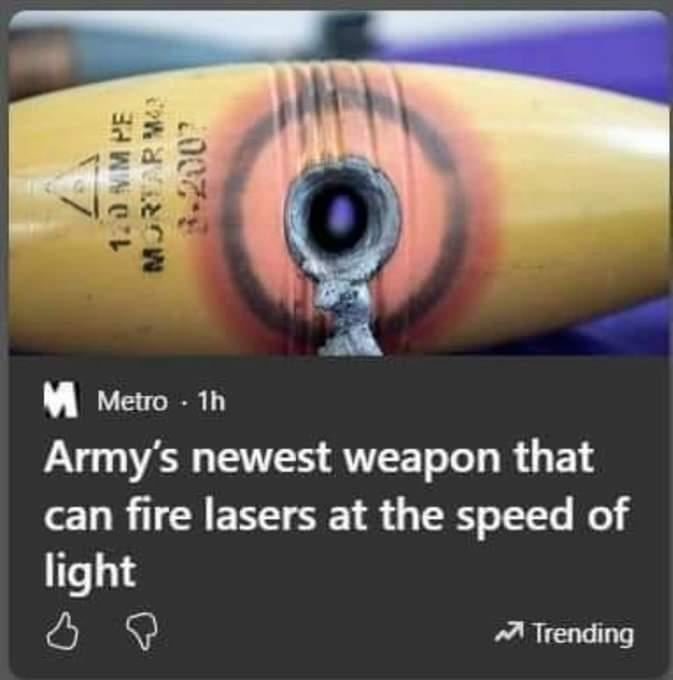this post was submitted on 25 Jul 2024
1149 points (99.2% liked)
Science Memes
10743 readers
1971 users here now
Welcome to c/science_memes @ Mander.xyz!
A place for majestic STEMLORD peacocking, as well as memes about the realities of working in a lab.

Rules
- Don't throw mud. Behave like an intellectual and remember the human.
- Keep it rooted (on topic).
- No spam.
- Infographics welcome, get schooled.
Research Committee
Other Mander Communities
Science and Research
Biology and Life Sciences
- !abiogenesis@mander.xyz
- !animal-behavior@mander.xyz
- !anthropology@mander.xyz
- !arachnology@mander.xyz
- !balconygardening@slrpnk.net
- !biodiversity@mander.xyz
- !biology@mander.xyz
- !biophysics@mander.xyz
- !botany@mander.xyz
- !ecology@mander.xyz
- !entomology@mander.xyz
- !fermentation@mander.xyz
- !herpetology@mander.xyz
- !houseplants@mander.xyz
- !medicine@mander.xyz
- !microscopy@mander.xyz
- !mycology@mander.xyz
- !nudibranchs@mander.xyz
- !nutrition@mander.xyz
- !palaeoecology@mander.xyz
- !palaeontology@mander.xyz
- !photosynthesis@mander.xyz
- !plantid@mander.xyz
- !plants@mander.xyz
- !reptiles and amphibians@mander.xyz
Physical Sciences
- !astronomy@mander.xyz
- !chemistry@mander.xyz
- !earthscience@mander.xyz
- !geography@mander.xyz
- !geospatial@mander.xyz
- !nuclear@mander.xyz
- !physics@mander.xyz
- !quantum-computing@mander.xyz
- !spectroscopy@mander.xyz
Humanities and Social Sciences
Practical and Applied Sciences
- !exercise-and sports-science@mander.xyz
- !gardening@mander.xyz
- !self sufficiency@mander.xyz
- !soilscience@slrpnk.net
- !terrariums@mander.xyz
- !timelapse@mander.xyz
Memes
Miscellaneous
founded 2 years ago
MODERATORS
you are viewing a single comment's thread
view the rest of the comments
view the rest of the comments

Well that's pretty easy, just fire it anywhere except a vacuum.
But I never use my vacuum. Might as well fire a laser at it!
Yes, ofc - but we're talking about a weapon here, the air is implied as a medium, and the very-near-c with it.
But a weapon that would construct some sort of structure or a tunnel between it's position and the target would be something else indeed.
It's still travelling at c, it's just bouncing around the medium's particles on the way. It arrives later because it's not going in a straight line.
I don't think that's a great way of thinking about it. I think you're describing something more like scattering
or maybe absorption and stimulated or spontaneous emission
which does indeed happen, but is distinct from the index of a medium.
If it were indeed "bouncing," optics wouldn't really work, as any n > 1 medium would cause the light to go every which way.
If you fire a laser that goes first through vacuum, then through a lens, then again in vacuum, at what speed is the light travelling on the other side?
It's same as it was at first. The speed of light depends on the index of refraction of the medium it's in, but doesn't depend on its "history."
I didn't write it out, but what I was trying to get at was that if it would "slow down", then it would be slower on the other side. The explanation that the light travels longer through a medium with the same speed would therefore make sense to me.
But then again, how it wouldn't shoot out in every direction, that doesn't make sense to me.
I don't know much about light, that's why i'm asking. And i'm sure some article or paper would have anwers for that question, I might search it on my own.
Ah, I think I see what you mean.
I think the right way to think about this is as a wave, and in that respect, it's no different from sound waves. If sound goes through the air, then through another medium, then out the other side back to air, the speed will follow the same general rules as with light. One notable differece is that speed of sound through many materials is faster than through air.
Note also that you'll get acoustic reflections at interfaces, which is analogous to optical (Fresnel) reflections at interfaces (e.g., reflection off of glass or water).